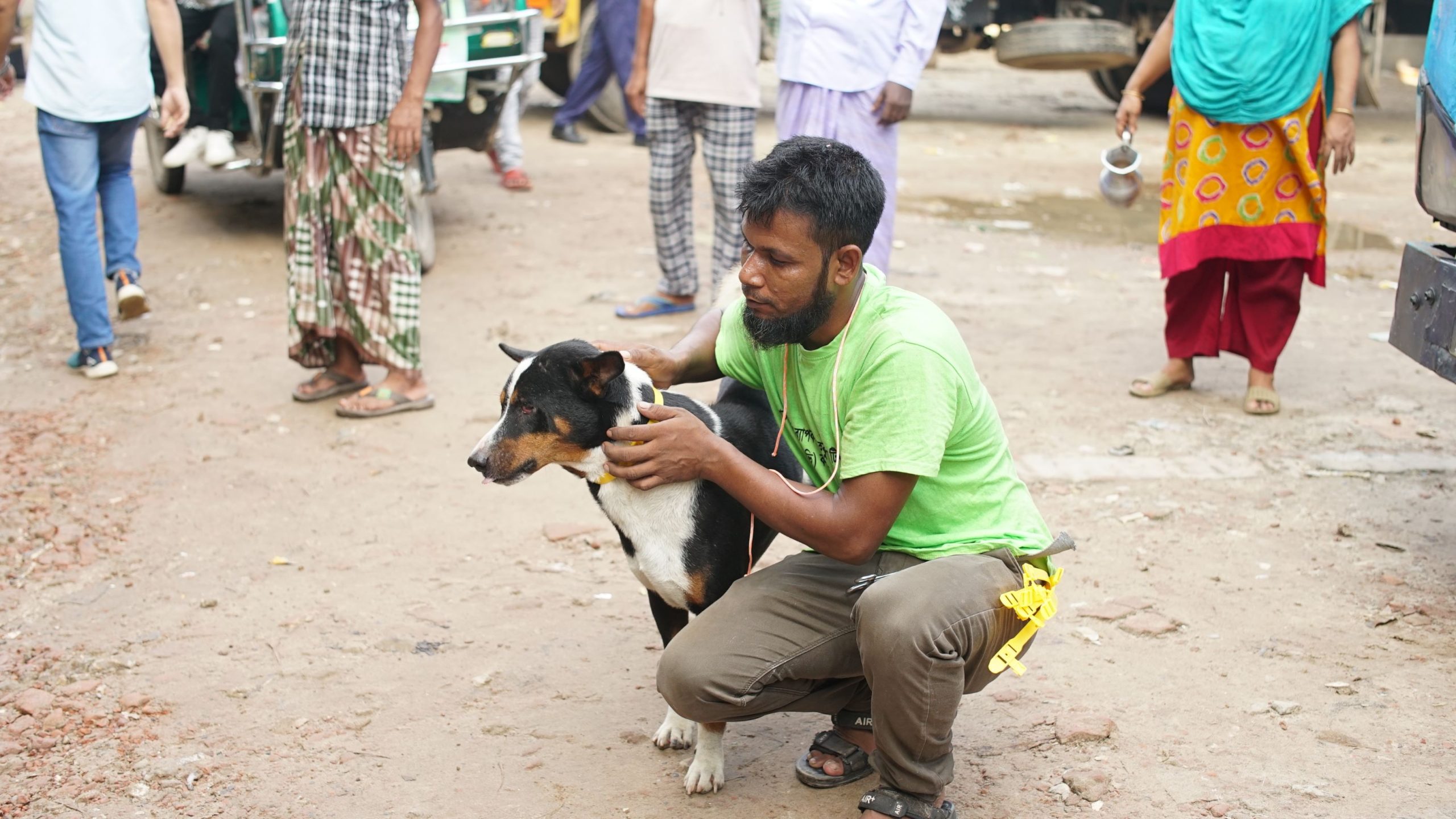17 September 2023, Dhaka – “Case control study to examine the social and epidemiological impacts of long-lasting collars deployed during dog vaccination campaigns in Bangladesh” has been implemented at Savar and Narshingdi municipalities between 08-16 September 2023 to evaluate the epidemiological and social impacts of long-lasting collars deployed during mass dog vaccination campaigns by FAO Bangladesh and University of Glasgow in collaboration with Department of Livestock Services (DLS) and Communicable Disease Control (CDC), DGHS. Over the course of 8 days, a total of 2153 dogs have been vaccinated, microchipped, and marked by either collaring 1146 dogs at Savar or coloring 1007 dogs at Narshingdi municipalities.
Rabies kills approximately 59,000 people globally every year and the overwhelming majority of these deaths are caused by the bites of rabid domestic dogs. Rabies is entirely preventable, and safe and effective vaccines exist for both humans and animals. Most rabies deaths occur in low- and middle- income countries (LMICs) with the resulting burden exceeding 8 billion USD annually so it is costly both in the devastating loss of human life but also has economic ramifications. To break the cycle of transmission, dog vaccination campaigns should strive for 70% vaccination coverage. The evaluation of dog vaccination campaigns, specifically vaccination coverage, remains challenging, particularly in LMICs where most of the dog population is free-roaming and not restrained.
Through a regional FAO TCP project, FAO Bangladesh established Rabies Action Centre of Excellence (RACE) and conducted a national try-out; an Olympiad like competitions and got best 5 teams amongst 42 teams. They got an introductory training on dog catching & vaccination in 2021. With that knowledge and skills teams contributed a lot to the national MDV campaigns. After that an advanced training was also provided to national teams facilitated by a pool of experts from Indonesia including the Bali A team to achieve the next level of expertise to increase more vaccination coverage.
Under OH collaborative approach FAO, University of Glasgow, Boehringer Ingelheim, DLS, CDC DGHS and local government are supporting the programme. Four national teams are performing dog catching, vaccinating, microchipping and finally marking by collar or paint. International standard vaccines and dog collars from France are used in the study. There is no difference of intervention between two locations except marking: in Savar teams doing by collaring and in Narshingdi by livestock painting. Teams are capturing data using kobo toolkits and Talea app.
National teams will visit periodically in two locations and capture data on longevity of marking for another 11 months. To understand the perception of community sensitization on vaccinated dogs with collars, some students from universities with sociology back grounds will be deployed to collect data on the people’s perception. All the data will be analyzed, and results will be shared to motivate policy decisions towards achieving the target of canine rabies elimination by 2030.






















